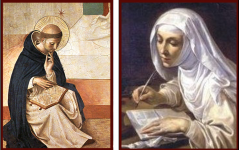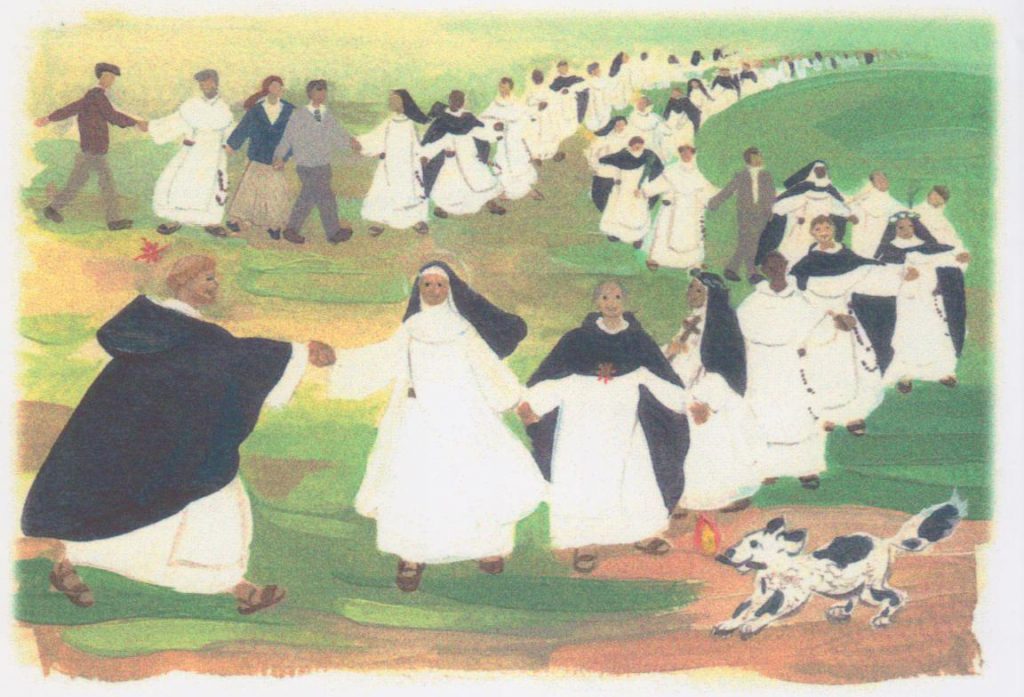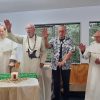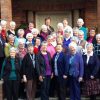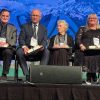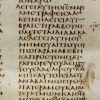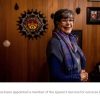We have been blessed to have Fr David Michael Kammler, the Order’s General Promoter of the Laity since 2007, visiting Dominican Family in Aotearoa New Zealand during March and April 20013. We thank Kay Blackburn and Michele Ness for the following reports:
A session with Fr David Kammler OP 3/2/13
We began with a short prayer based on Lectio Divina with today’s gospel reading of Moses and the burning bush.
Fr David showed a picture of Moses and the burning bush and reflected on it. It depicted Moses, taking off his sandals and holding a staff. Yahweh told Moses to take off his sandals because he was on holy ground. He sent Moses off to journey, (hence the staff) over the border, out of his comfort zone. Treading on the ground, barefoot, he would be in touch with reality, just as we are when we walk barefoot over stones.
The burning bush symbolises energy, enlightenment, enthusiasm, love, compassion and enthusiasm.
‘Yahweh’ was translated by Martin Buber as meaning ‘I am where you are’. (See psalm 23 ‘Even were I to walk in a ravine as dark as death, I should fear no danger, for you are at my side.’)
The Dominican charism is to praise, to bless and to preach. Fr David reminded us that each and everyone of us is special and we are part of an interdependent family. Fr David described St. Dominic as the father of good news. The way we follow Jesus is through professing/preaching the gospel. He showed us a picture (copies of which he gave us later) depicting Sts Peter and Paul giving St Dominic a staff (to journey with) and a bible (to preach with).
Fr David then took us on an inspiring journey to all corners of the earth, visiting lay Dominican families with him.
Statistics: there are 3000 Dominican sisters, 6000 Dominican friars, 190,000 lay members and altogether 200,000 persons in the Dominican family, most of them being lay people. Prayer, study, community and preaching are elements in all branches and Fr David organised the rest of his talk with examples of each of these aspects.
Some branches consist of people sharing the same household, in others people come together to pray, or study or work together at regular intervals.
Prayer
‘An example of the extended Dominican community in Europe is when they pray in unity at 8pm on Tuesdays, for the special intentions requested by people all over Europe on their website.
We heard about the professed lay Dominicans in Vietnam, 105,000 of them, because the communist government allowed them to gather in small groups, seeing them as old grannies saying the rosary, and thought them harmless.
Study
We learnt about a huge diocese in Mexico (200,000 square kilometres) with many lay Dominican leaders. They come together to learn about the many different Christian sects among them, so that they can respond appropriately to what is taking place and to the number of Catholics going to join other denominations. They are discerning the signs of the times.
Community
Communities are not necessarily living under the same roof. Many people live separately and come together regularly to meet and to work, pray and celebrate. They do so within and not apart from their parishes.
Preaching
Like St. Paul, we preach in the market place and the pulpits of the lay Dominicans look much the same wherever Fr David goes. He finds people preaching through example in our secular environments through engaging with politics, with society and using modern media. He gave an example of a family of lay Dominicans working out how much time they had to spare, when and for how many families. They gather on Saturday mornings for a day of solidarity and prepare a meal for 80 families. They provide catechesis, prayer and games for the children, showing active love. In this way they authenticate the word of God. Dominican schools also preach through education and sharing values.
No place too remote
Fr David showed us a wonderful greetings card from a group of life prisoners who have become lay Dominicans, given to him in thanks for his presence and visits. Through forming a lay Dominican family, they have hope for the future. They recognise that God’s grace grants us a new future and have a rule not to discuss their past lives and crimes.
‘Every saint has a past, but every sinner has a future.’
He reminded us that our formation as lay Dominicans involves conformation (formation as a Christian); information (political awareness, attentiveness to what is happening in our communities) and transformation, putting social justice principles into practice.
Finally Fr David suggested we are each, individually, like a pixel or a mosaic stone, and it is only as we come together that we make a picture. Together we can make visible the face of Christ, and he showed us a mosaic picture of Christ.
An inspiring family time with Fr David Sunday 3 March
We began with prayerful study of the passage of the burning bush from the Book of Exodus. We reflected briefly on: the burning bush; God speaking through the elements; The enormity of I AM speaking of the pain of His people; the significance and attraction of small communities sharing the reality of their lives being transformational and brings conversion; the echo of burning hearts on the road to Emmaus (and our own burning hearts); taking of our sandals and feeling the holy ground; Moses caught in the midst of ordinary every day work; Moses had taken his flock to the far side of the wilderness , the need to stretch our limits; the call to Moses to return back to the place of pain; fire a symbol of destruction and regeneration; Aotearoa still a land of milk and honey (damage to our ecology); ….sorry I didn’t get all the points….
Fr David used a power presentation to speak of the Dominican four pillars of and for the laity; and that Dominic was rooted in the Gospel (always pointing to the Gospel); and those inspired by Dominic are like an enormous tree all parts of which are necessary and equal within the Dominican family. He used pictures to illustrate the following:
- Community prayer can take place in innovative ways through media and social networking removing isolation e.g. in some countries every Tuesday night at a definite time
- We study not to have an invisible library in our heads but so as to more adequately respond to challenges
- For the laity we must preach where we are. We all have a preaching pulpit. A German Jew theologian (Bauer?) translates “I AM” as “I AM WHERE YOU ARE”
- Jesus preached with his 33 years of life not just the 3 years as an itinerant. Cf www.word.op.org
- Remember “every saint has a past, every sinner has a future”. Communities forming behind prison walls can be supported during and after imprisonment by Dominican laity
- Supportive communities for groups with special needs, e.g. migrants, can be built up by Dominican laity sharing evening prayer and shared meal
- Junior Dominican groups in Argentina go out on mission to distant small rural communities AND return again and again
- Dominican laity can help the marginalised as their mission – just ask ourselves “What can we do?” “What time do I have?” (some commit to a Saturday morning)
- In these ways Jesus’ love becomes authentic and credible through the love of the laity – we are small lights from the light of Christ
- When the word ‘FORMATION’ becomes Confirmation / Information / Transformation – see / judge / act is possible out of these four pillars
- Be careful to turn ACT into action not activism
- What we absorb through prayer and contemplation (colour black) we reflect back as light (colour white) – hence the Dominican habit!
- Picture of Dominic pointing to the Scripture. Father David’s comment, “Dominic did not want to be Dominican. He wanted to be Christian.”
- Be confronted with real life without shoes
- Father David pointing to a blue power point screen said, “ We are pixels, small parts of a whole. We are like broken pieces of a mosaic coming together in our brokenness to make a whole.”
Click the link to read an article written by Fr David Kammler on Dominican Women and Preaching.
Click to download the Fundamental OP Questions and Prayer to St Dominic and Prayer to St Dominic shared by David.
For the list of websites that Fr David quoted go to the Useful Websites page on this website (top right corner of the screen).
Information about the Cross of Solidarity – Iraq project. To order a cross or necklack for NZ$5 please contact Teresa on 021 649 012 or email dominicansaotearoa@gmail.com.
Click to download the Family of Dominic prayer (with Sr Veronique Henry OP painting or the image by itself is displayed below:
